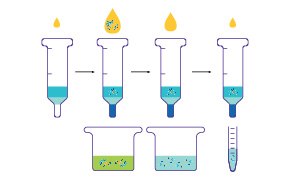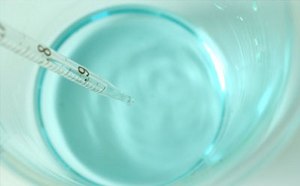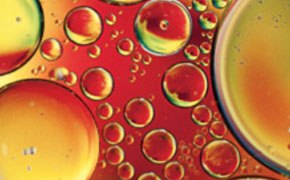蛋白纯化

众多的蛋白纯化方法广泛应用于生物学和生物医学研究领域。重组蛋白表达和纯化流程由许多变量决定。这些变量包括但不限于蛋白的物理性质和生物功能,以及是否应使用细菌或真核细胞系来表达目的蛋白。重组蛋白表达和纯化方法领域已取得重大进展,于此同时,出现了大量市售系统和试剂套件。然而,蛋白是复杂的大分子,必须凭经验确定最佳的蛋白质表达和纯化策略。
推荐类别
蛋白纯化的关键因素
蛋白结构和功能通常是选择蛋白纯化策略时要考虑的关键因素。重组蛋白的生化或生物活性部分取决于蛋白中的不连续结构域,而不连续结构域通常依赖于蛋白折叠成的二级、三级和四级结构。
蛋白折叠统称为高阶结构(HOS),对于维持蛋白的正确三维形状和功能必不可少。此外,蛋白溶解度是决定蛋白纯化是否成功的关键属性,其受许多因素影响,包括分子大小以及N-末端元素和C-末端元素。重组蛋白通常包含N-末端标签和C-末端标签,这些标签是用于免疫组织化学检测、纯化或蛋白亲和层析的小序列,具体取决于特定的N-末端标签和C-末端标签以及预期的下游应用。
蛋白纯化方法与应用
无论研究人员的目的是研究蛋白功能,还是为了运用策略扩大蛋白纯化规模便于下游工业规模的生物制剂和药物生产,都有许多蛋白纯化方法、试剂和工具可供选择。所选的蛋白纯化方法将部分确定样品制备流程。亲和层析是合适的初始纯化步骤,用于纯化含相关标签的可溶性重组蛋白;但是,不需要的蛋白也可能会与亲和树脂柱结合,并在最终洗脱过程中与所需目的蛋白质一起洗脱。如果需要额外的纯化过程,则可采用补充纯化策略,包括排阻层析或离子交换层析。重要的是,由于研究人员可能希望从最终的纯化蛋白中去除任何非自然序列,故可以去除许多亲和标签。
相关文章
- 免疫沉淀(IP)可用于高效、高产量分离和纯化与FLAG®肽标签融合的蛋白质。此过程采用ANTI-FLAG® M2亲和凝胶进行,后者是一种与琼脂糖树脂共价结合的高度特异性单克隆抗体。
- This page shows how to perform sample desalting, buffer exchange and concentration for affinity chromatography of tagged proteins.
- This page shows how to solubilize membrane proteins with products from Cytiva.
- This page describes efficient column packing and preparation for affinity chromatography of tagged proteins using Cytiva products.
- This page covers the use of Sepharose Fast Flow for purification of proteins.
- 查看完整内容 (23)
相关实验方案
- GenElute™-E单次离心DNA/RNA制备试剂盒减少塑料废弃物,消除有害废液,创建可持续发展实验室。
- How to optimize purification of histidine-tagged proteins using Cytiva products.
- How to separate proteins and peptides with affinity for metal ions by immobilized metal chelate affinity chromatography.
- His GraviTrap™ TALON® columns are prepacked with 1 ml of TALON® Superflow medium. Each column provides simple manual purification of up to 15 mg of histidine-tagged proteins.
- This page discusses column packing and preparation techniques for reverse phase chromatography.
- 查看完整内容 (6)
查找更多文章和实验方案
我们可以提供哪些帮助
如有任何疑问,请提交客户支持请求
或联系我们的客户服务团队:
发送电子邮件至 custserv@sial.com
或致电 +1 (800) 244-1173
更多支持
- 计算器与应用_缓冲液计算器_HPLC方法转换计算器-默克生命科学
默克该工具箱包括用于化学、生命科学、材料科学等方面的科学研究工具和资源。
- Customer Support Request
Customer support including help with orders, products, accounts, and website technical issues.
- FAQ
Explore our Frequently Asked Questions for answers to commonly asked questions about our products and services.
如要继续阅读,请登录或创建帐户。
暂无帐户?

